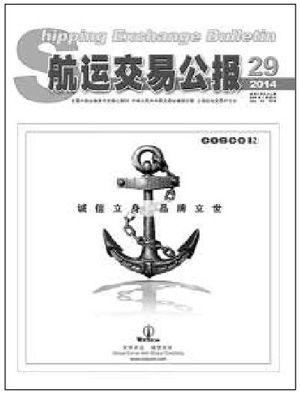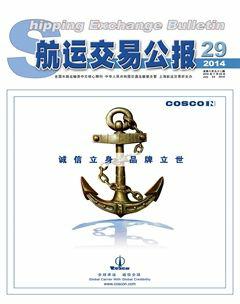Weekly Commentary on China Containerized Transportation
Zhu Pengzhou

In the week ending July 11, China export box transport market kept stable overall. Impacted by the oversupply of capacity, freight rate in many services declined and comprehensive index fell. On July 11, China (Export) Containerized Freight Index (CCFI) issued by Shanghai Shipping Exchange (SSE) quoted 1092.07 points, down by 0.5 percent against last week; while Shanghai (Export) Containerized Freight Index (SCFI) issued by SSE quoted 1100.15 points, falling by 2.6 percent from last week.
In the Europe service, considering that transport demand was active, box carriers injected more capacity into service, which worsened the unbalanced condition of demand and supply previously. In the week ending July 11, the average slot utilization rate in the Europe service was around 90 percent. On July 11, the freight rate in the Shanghai-Europe service (covering seaborne surcharges) quoted USD1302 per TEU, falling by 8.1% against last week. In the Mediterranean service, the whole transport demand was firm, but owing to the different points on the cargo volume trend, most box liners reduced fright rate to lock their market shares. On July 11, the freight rate in the Shanghai-Mediterranean service (covering seaborne surcharges) quoted USD1567 per TEU, slipping by 7.8% from last week.
In the North America service, U.S. economy kept on the good development trend, where the increasing demand boosted transport demand. The average slot utilization rate kept at around 85% in this service, with spot rate declining. In the USEC service, transport demand was stable, and the average slot utilization rate kept at around 95 percent, with spot rate stable. On July 11, the freight index in the USWC quoted 936.32 points, down by 1.0% against lat week, while the freight index in the USEC services quoted 1248.52 points, almost unchanged from last week.
In the Persian Gulf/Red Sea service, dragged down by the weakened transport demand in the receipt region, cargo volume declined this week. Nevertheless, some box carriers withdraw capacity temporarily, which retrieved the supply of capacity and spurred the average slot utilization rate to be around 85%. Considering that the temporary improvement of demand/supply condition, box liners held different attitudes on the freight rate strategy, so spot rate rose and slipped. On July 11, the freight index in the China-Persian Gulf service quoted 1169.67 points, down by 2.7% from last week.
Transport demand in the Australia service was flat. In order to control capacity, AADA members ceased some services, which retrieved the oversupply of capacity, with the average slot utilization rate kept around 85%. However, it failed to dampen spot rate from declining. On July 11, the freight rate in the Shanghai-Australia service (covering seaborne surcharges) quoted USD622 per TEU, down by 3.7 percent against last week.
In the South America service, cargo volume kept firm, with the average slot utilization rate standing around 90 percent. Freight rate declined from the level USD1000 per TEU in these several weeks, which threatened the profit and loss balance condition of supply/demand. In order to hike rate, part of box carriers began to implement GRI before mid. July, and boosted booking rate in the spot market. On July 11, the freight rate in the Shanghai-South America service (covering seaborne surcharges) quoted USD1314 per TEU, surging by 25.6% from last week.
(Please contact the Information Dept of SSE for more details.)

